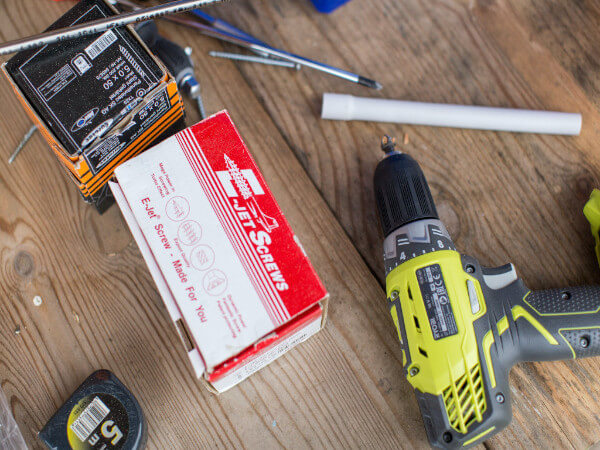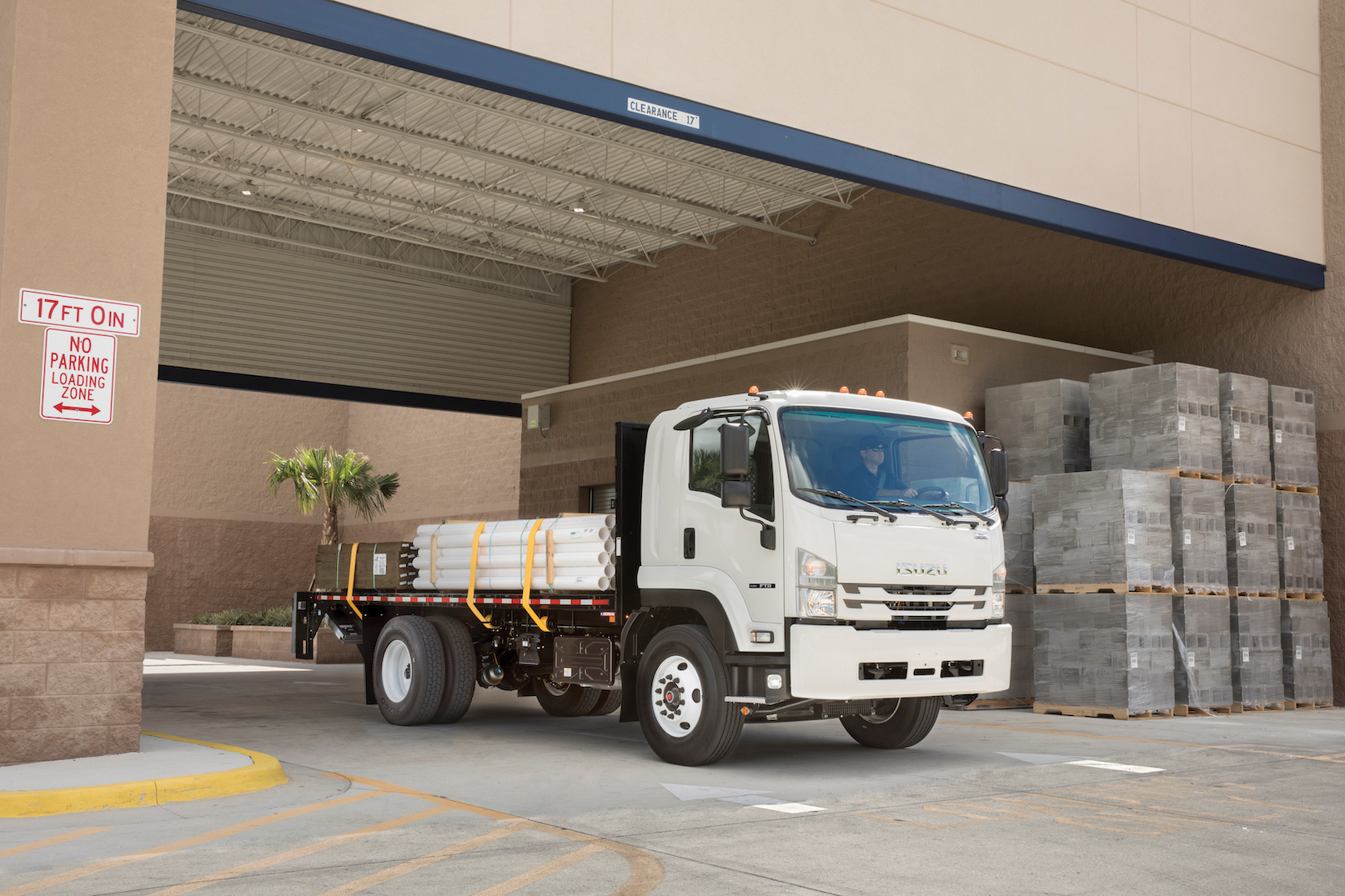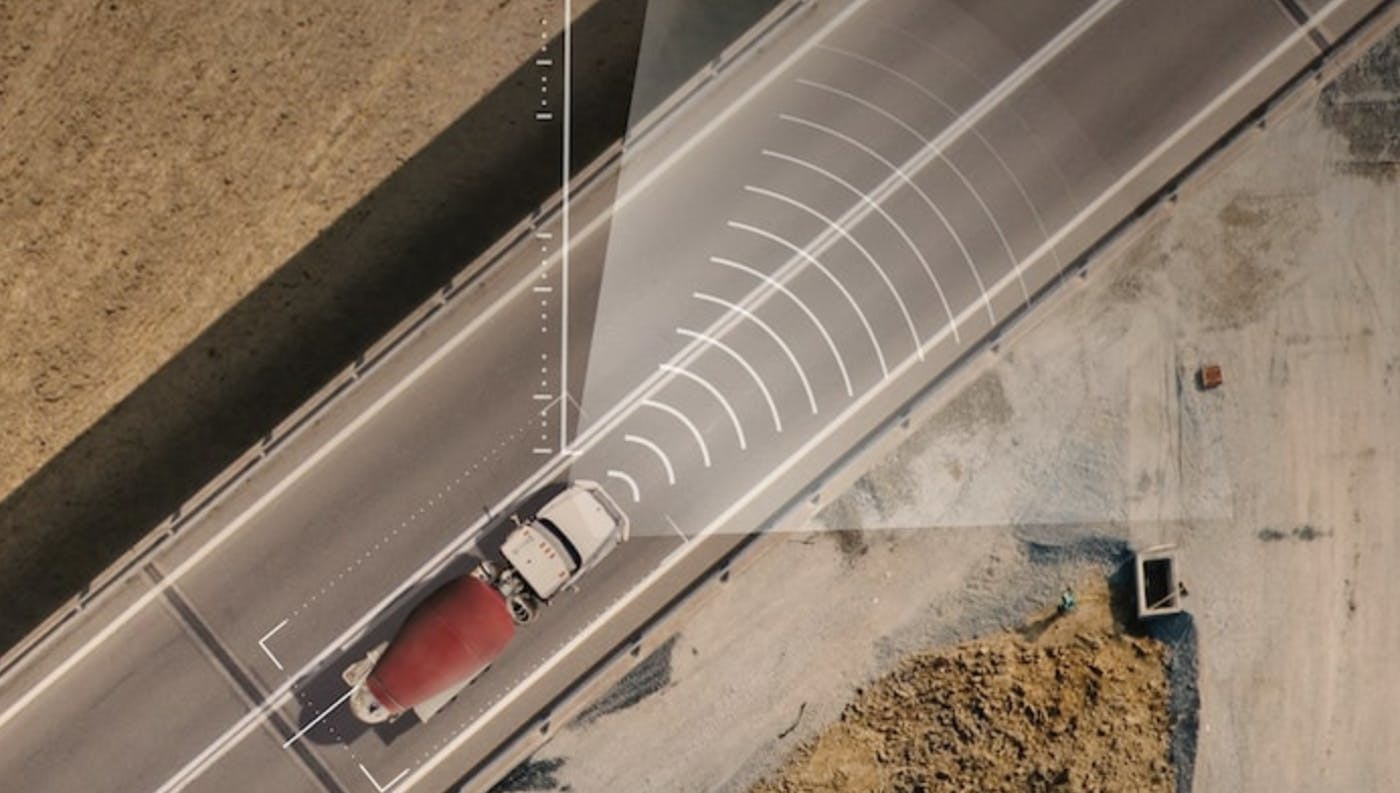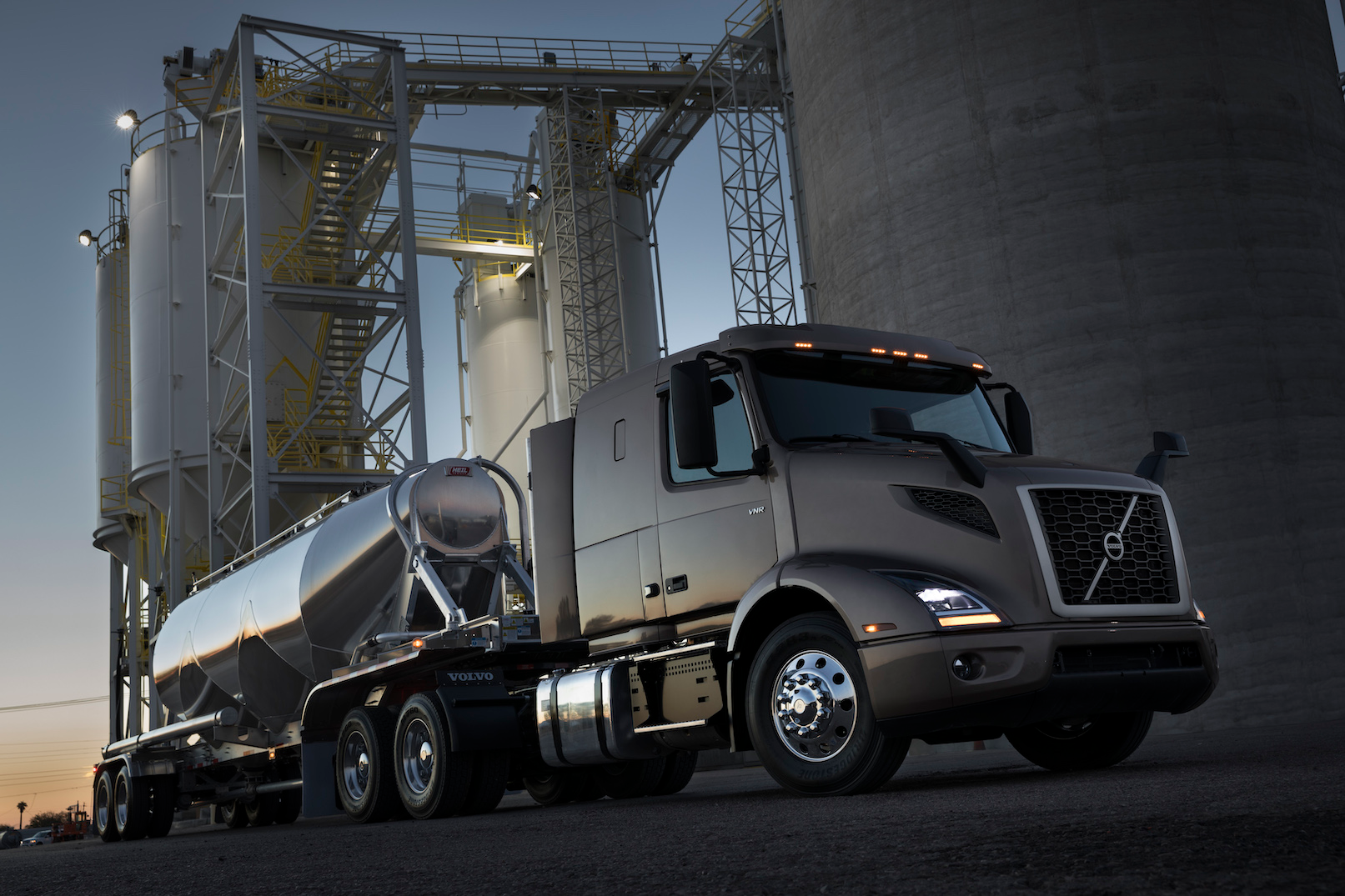When discussing new technology for heavy trucks – Classes 6, 7 and 8 – we have to start with electrification.
It’s been the biggest buzz in recent years.
Several OEMs have demo’ed electric models, providing a proof of concept. But it’s clear not every application is suited to electric trucks, especially when it comes to construction.
Three criteria are used to determine whether an electric truck is the right choice for the task:
One, the loss of payload capacity due to battery mass is not a deal breaker.
Two, the trucks are not in motion for the entire workday, requiring additional charging.
Three, they come home at night. This is based partly on the need to charge, and until charging stations become as common as gas stations, most electric trucks will need to return home for that process.
But even charging stations on every corner won’t answer the second part of the home-at-night requirement, which is that charging massive vehicle batteries takes time. It’s not something that can be completed while the driver is inside Pilot Flying J having lunch.
The application most often cited as a perfect match for electric vehicles is pickup and delivery (P&D).
In construction, good matches could include service, fuel and water trucks, and trucks shuttling equipment between sites, whether on a flatbed or a trailer. But dump trucks, mixers and a number of other mainstay applications would not be a great place to go electric.
Here’s a look at the latest heavy trucks on the market, advancements in truck electrification and a lot of other technology that can help drivers and contractors:
Who’s gone electric?
Kenworth’s T680E has a range of up to 150 miles, depending on the application, and can be fully charged in 3 hours.
This Class 8 truck (pictured at the top of this story) uses Meritor’s Blue Horizon 14Xe tandem electric powertrain that provides 536 horsepower of continuous power and up to 670 horsepower peak power and 1,623 pound-feet of torque. Top speed is 70 mph. Two gross vehicle weight ratings (GVWR) are offered: 54,000 and 82,000 pounds.
Kenworth says the T680E is targeted at the P&D, regional haul and drayage markets. It also offers two electric low-cab-forward models, the Class 6 K270E and Class 7 K370E.
Electric motors are the HV2600 and HV3500, rated at 355 and 469 horsepower, respectively. With the HV3500, the truck can maintain 40 mph on a 6% uphill grade. Range is up to 200 miles and top speed is 65 mph.
Equivalent models from Kenworth’s sister company, Paccar, are the Peterbilt 579E and the 220EV.
Mack offers the LR Electric, its first – and so far, only – fully electric truck. But it’s only offered as a refuse truck. Tim Wrinkle, Mack Trucks construction product manager, explains why:
“Refuse made the most sense. It is a closed-loop application where the vehicle returns to its home base each day, allowing it to be charged.”
Is construction ready for electric trucks?
Despite all the electric hype and buzz, construction customers seeking electric vocational trucks are left with few, if any, options.
“Construction will be one of the last markets to go electric,” says David Hillman, senior director of vocational marketing, Navistar. Navistar produces International brand commercial trucks. “It will get there eventually, but not soon.”

Engine options for the International HX620 are the International A26 with up to 500 horsepower and 1,750 pound-feet of torque, or the Cummins X15 with up to 605 horsepower and 2,050 pound-feet of torque. Transmission options include an Allison automatic, Eaton manual or Eaton automated manual. The HX620 has traction control, electronic stability control and Bendix Wingman Fusion. Single and dual fuel tanks are available up to 240 total gallons.Navistar InternationalHe says construction tends to be local, and a large number of construction trucks come home each night, which meets two of the necessary criteria for making electric work.
Beyond that, Hillman says, construction would benefit from characteristics of electric vehicles, especially immediate torque and low noise.
As with electric passenger vehicles, initial costs tend to be higher than for traditional internal-combustion vehicles, but operating costs can be competitive. Oil and filter changes are eliminated. Foundation brake wear can be significantly reduced, especially for trucks equipped with regenerative braking.
Battery weight remains a consideration, “but since we introduced our eStar truck in 2010, battery technology has advanced significantly, and part of that advance is a dramatic reduction in battery weight,” Hillman says.
His advice to customers considering electric trucks is to work with the dealer as a consultant. Understand that vocational applications are wildly diverse, and the dealer can help identify which of your applications would be best suited for electric.
But mostly, “manage your fleet as you always have. Understand your operation and the impact of fleet management decisions. Hold the OEM and the dealer accountable to make sure they keep your best interests in mind.”
Regulations driving change
California is the major mover in bringing electric vehicles into use, and Brian Tabel, executive director of marketing of Isuzu Commercial Trucks of America, says the company probably will not roll out electric models until late 2023 or early 2024.
The California Air Resources Board (CARB) mandate has not been finalized but will almost certainly require that a certain percentage of vehicles be “zero emissions.” He says other states may follow suit. Pennsylvania seems likely to do so. States will have the option of following EPA or CARB requirements.
“Electrification is here, and we’re fully aware of that,” Tabel says. “We’re engaged in development and testing right now but are still a year or a year-and-a-half away from providing details.”

The Class 6 Isuzu FTR has a GVWR of 25,950 pounds and a GCWR of 30,000 pounds. Power comes from a Cummins B6.7L diesel engine rated at 260 horsepower and 660 pound-feet of torque. That output is run through an Allison 2500 RDS six-speed automatic transmission. The FTR will accept bodies up to 30 feet long. Full air dual-circuit brakes with ABS and 16.5-inch S-cam drums front and rear provide stopping power. Fuel tank choices are 50 or 100 gallons.IsuzuTabel says one market where it seems electric vehicles would be shoo-ins is landscaping. “Landscapers meet the general requirements for using electric trucks efficiently, but that market has also been adopting electrification strongly, from string trimmers to mowers to chain saws. Some landscapers even have solar panels on the roofs of their trucks to provide equipment recharging between jobs.”
Landscapers are also acquiring bigger trucks to do bigger jobs. Many still rely on one-ton duallies but more are moving into low-cab-forward models such as the Class 6 Isuzu FTR and Class 7 FVR. The nimble handling of these trucks with their short bumper-to-back-of-cab distances and tight turning radiuses, plus the fact they can be upfitted with everything from cargo boxes to stakesides and flatbeds, make them very appealing.
Technology improving safety
Hillman says that among the many other technological advances in trucking, collision mitigation is often at the front. Cameras are also important, including those that capture in-cab video. Hillman says there’s a cultural bias to assume the truck driver is at fault in a multi-vehicle collision, “and in-cab video can demonstrate that the driver was operating the truck in a safe and responsible manner.”
Some drivers see in-cab video as an unwelcome intrusion of Big Brother, “but that typically only lasts 60 days or until the first time their safe operation of the truck is called into question.”
Hillman points to the suite of safety tools provided by Navistar’s International Diamond Logic package. Many features can be programmed by the customer.
For example, vehicle speed can be limited when moving with the body out of stow position. In reverse, the radio can be muted to reduce distraction. Camera point-of-view can be integrated with turn-signal activation to provide better visibility when turning or changing lanes.
Hillman says one technology that does not receive enough attention is the ability of the truck to be connected to the dealer, to the customer and to other vehicles and equipment on the jobsite.
Tabel says Isuzu’s optional advanced driver assist system (ADAS) will debut on its 2022 interim N-Series diesel models before being deployed on the 2023 N-Series gas and F-Series models. Features include lane-departure alerts and automatic braking for collision avoidance. All F-Series trucks now have the Cummins B6.7L engine.

Mack Granite trucks are available with the next generation of Bendix Wingman Fusion, a camera- and radar-based driving assistance solution.Mack TrucksMack’s optional ADAS is the latest generation of Bendix Wingman Fusion. Mack Command Steer for the Granite axle-back model uses an electric motor to complement the steering’s hydraulics. Steering effort is reduced by up to 85% and helps the driver maintain a consistent course in strong winds, on rough roads and in other challenging conditions.
Keeping electronic systems current requires updates, and Mack Over the Air (OTA) remote programming allows drivers to perform updates through the truck’s instrument cluster at whatever time is most convenient.
Standard on Anthem and Pinnacle tractors and Granite construction models, “driver-activated OTA updates can be done in minutes without a visit to the dealer to receive software updates and set vehicle parameters,” says Wrinkle.
Assist technologies available on the Kenworth T680 Next Gen include lane-departure warning and Lane Keeping Assist. Lane departure uses an audible alert while Lane Keeping Assist provides a tactile alert through the steering wheel.
The T689 is also available with adaptive cruise control that monitors traffic conditions and modulates throttle and brake positions to maintain a pre-set following distance to the vehicle ahead.
Kenworth’s Side Object Detection continuously monitors the passenger side of the truck and provides audible and visual alerts when an object or vehicle has entered certain zones.
Covid lingers
Covid is still playing a major role in the trucking world.
“Economic strength has continued despite ongoing Covid disruptions,” says Jonathan Randall, Mack Truck senior vice president of sales and commercial operations. Consumer spending and residential construction have contributed to robust customer demand, increasing lead times and order backlogs.
However, there’s a bottleneck of goods at ports, and although freight pricing is expected to remain high, carriers are having trouble recruiting drivers to expand their fleets.
Hillman says everyone needs to be prepared for ongoing delays of parts and products. Microchip availability is one example. Navistar, like everyone else, is having hiring challenges. His advice: “Try to adapt as best you can in an ambiguous environment.”
Tabel says lead times have gone from two months in pre-Covid days to nine to 12 months now. Chassis lead times are long. Body lead times are also long, and costs vary frequently, sometimes day-by-day.
“Everything is in demand, and everything is in short supply,” he says. “It’s just the way things are for the time being.”

The Volvo VNR 400 has a 42-inch flat-roof sleeper to maintain hours of service on short hauls. Engine options are a Volvo D11 with up to 425 horsepower and 1,550 pound-feet of torque, or a Volvo D13 with up to 500 horsepower and 1,850 pound-feet. Transmission options are Eaton Fuller manuals of 10-, 13- or 18-speed; or Volvo I-Shift 12-speed, I-Shift 12-speed severe duty or I-Shift 13- or 14-speed with crawler.Volvo